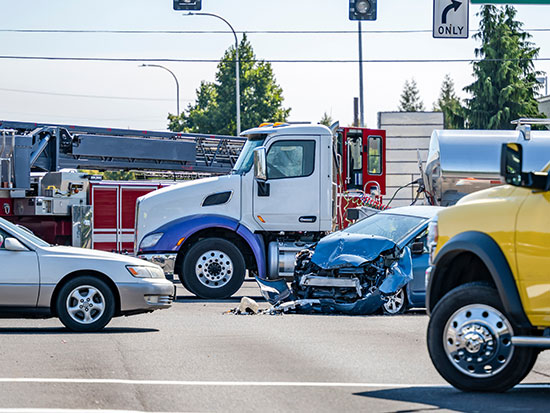
By Matt Windsor
UAB News
Despite fewer drivers on the roads and fewer injuries per accident, fatal crashes in Alabama increased by 26 percent over the three years from 2020 through 2022, according to a new analysis by UAB researchers.
Their paper is the first to examine how motor vehicle collision-related mortality rates and the individual components of those rates changed over the course of the pandemic. Previous studies focused on limited periods of time during the 2020 COVID lockdowns. The UAB researchers compared the 2020-2022 data with records from the three pre-pandemic years 2017-2019. The study contributes to mounting evidence that the risky driving behaviors observed during the 2020 lockdowns — including excessive speeding, driving under the influence and failure to wear seatbelts — have continued.
Motor vehicle collisions are the leading cause of unintentional injury death in Alabama, and the state consistently has one of the nation’s highest rates of fatal crashes, adjusted for population size.
26 percent increase
The overall motor vehicle collision mortality rate in Alabama did not change materially for the 2020-2022 period compared with 2017-2019, the UAB researchers found. But drawing on data from Alabama’s publicly available eCrash database and the Federal Highway Administration’s estimates of traffic volume, they investigated the relative contributions of each of the four factors that make up that rate: vehicle miles traveled, collisions, injuries in collisions and fatalities.
“What we noticed is that, despite the decrease in exposure, with fewer miles traveled and fewer injuries per collision, there was a large increase in deaths per injury,” said paper first author Lindy Reynolds, a doctoral student in the UAB School of Public Health’s Department of Epidemiology.
This type of study, known as a decomposition analysis, “shows you how much each component plays into the overall mortality rate,” said Russell Griffin, Ph.D., associate professor in the Department of Epidemiology and senior author of the paper, published in the journal Accident Analysis and Prevention. “We saw a 26 percent increase in the case fatality rate, and if we didn’t have the decrease in vehicle miles traveled and injuries per crash, it would have been higher.”
Griffin works closely with the Association for the Advancement of Automobile Medicine, or AAAM, an international organization that studies ways to reduce road traffic injuries. He and Reynolds are now completing a similar analysis with national data. Reynolds was selected to give an oral presentation on their current research at the AAAM conference in October.
The genesis for the current study was the ongoing work that Griffin and Reynolds do with UAB’s Center for Injury Science and the Crash Injury Research and Engineering Network, both located in the UAB Division of Trauma and Acute Care Surgery. “Motor vehicle collisions are the number one reason that people come to the emergency department here at UAB,” Griffin said. Anecdotally, the number of traffic fatalities appeared to be increasing during the pandemic, Griffin explains, which made this an interesting research question.
As injury epidemiologists, Griffin and Reynolds provide research support for trauma and emergency medicine studies within UAB. Their work helps clinicians understand whether changes in care processes are having the desired effect on patient discharge rates, for example. They also examine wider trends. Griffin first used the decomposition method in a 2017 study looking at firearm-related mortality, which demonstrated that the suicide rate is closely linked to firearm prevalence. In a 2019 paper, he used decomposition analysis to track the effects of vehicle safety technologies such as electronic stability control, frontal airbags and side airbags on motor vehicle collision mortality. Griffin and Reynolds recently finished writing a paper looking at the impacts of newer vehicle safety technologies, including forward collision warning and automatic emergency braking.
Reynolds has received a Fulbright scholarship to study the spatial patterns of injuries, including motor vehicle collisions, in Nepal. She will spend the next several months in that country, using mapping software to plot injury data. During the project, she aims to identify problematic intersections and roadways. This work could help resource-constrained Nepali officials decide where to place ambulances or clinics, Reynolds says.
“That’s the cool thing about injury epidemiology,” Griffin said. “We can take the local observations we make about trends and use the resources available through these databases to inform decisions at a national level.”



